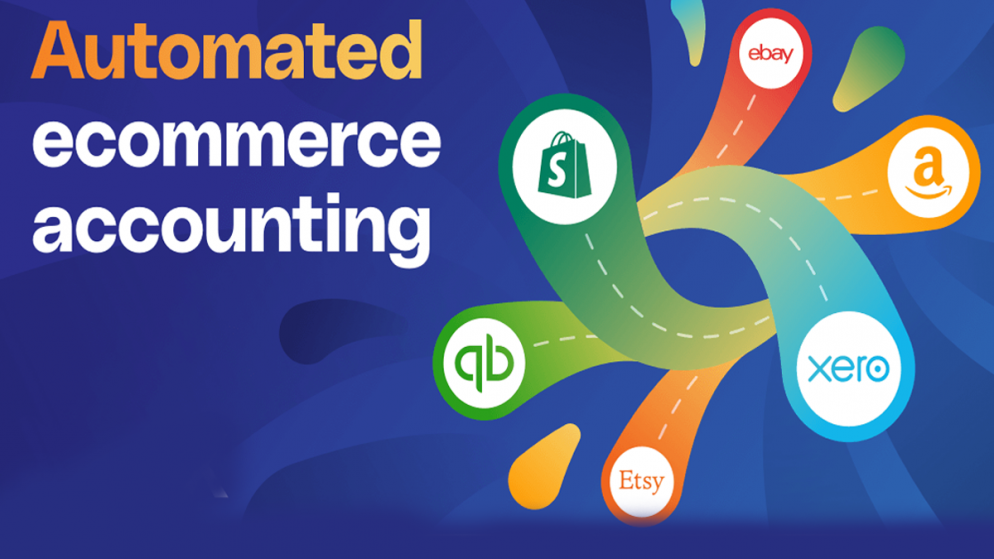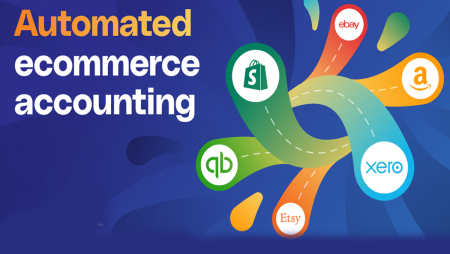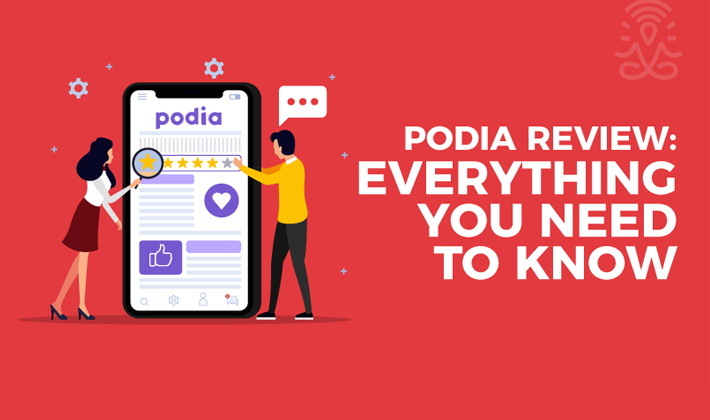

Table of Contents
What is ConnectBooks?
ConnectBooks is a software platform designed to facilitate bookkeeping and accounting processes for small businesses and organizations. It aims to streamline financial management by providing tools and features that integrate with popular accounting software systems.
ConnectBooks offers a range of capabilities that can vary based on the specific software and version you are referring to. Generally, ConnectBooks enables users to access their accounting data remotely, generate financial reports, manage invoices and expenses, and track financial transactions.
The platform often integrates with popular accounting software such as QuickBooks, Sage, or Xero, allowing users to sync their data seamlessly and access it through the ConnectBooks interface. This integration helps users simplify their financial workflows and gain real-time insights into their business finances.
ConnectBooks may also provide additional functionalities such as inventory management, time tracking, payment processing, and customer relationship management (CRM) features. These capabilities depend on the specific version and customization options offered by ConnectBooks.
How Does ConnectBooks Work?
ConnectBooks typically works by integrating with popular accounting software systems, such as QuickBooks, Sage, or Xero. Here is a general overview of how ConnectBooks might work:
- Integration: ConnectBooks establishes a connection with your existing accounting software, enabling seamless data synchronization. This integration allows ConnectBooks to access and retrieve your financial data from the accounting software.
- Data Accessibility: Once the integration is set up, you can access your accounting data through the ConnectBooks platform. This can typically be done via a web-based interface or mobile application, depending on the availability and features provided by ConnectBooks.
- Remote Access: ConnectBooks allows you to access your financial information remotely, providing flexibility and convenience. Whether you are in the office or on the go, you can view and manage your accounting data from any device with an internet connection.
- Additional Functionality: ConnectBooks often offers additional features and capabilities to enhance your accounting processes. These may include advanced reporting and analytics tools, inventory management, time tracking, payment processing, and more. The specific features available will depend on the version and customization options provided by ConnectBooks.
- Syncing and Updating: As you make changes or updates to your financial data through ConnectBooks, the platform will sync the changes back to your accounting software. This ensures that your records are always up to date across all platforms and that any modifications made in ConnectBooks are reflected in your primary accounting system.
ConnectBooks can vary based on the specific software version and integrations. It’s advisable to refer to the official ConnectBooks documentation or reach out to their customer support for detailed instructions and information on how to set up and use ConnectBooks effectively with your accounting software.
ConnectBooks Features
Here are some common features that accounting and bookkeeping software platforms like ConnectBooks might offer:
- Financial Management: ConnectBooks likely provides tools to manage and track financial transactions, including income, expenses, invoices, and payments. It may offer features for bank reconciliation and cash flow management.
- Reporting and Analytics: The software may include a range of reporting and analytics capabilities, allowing users to generate financial reports, analyze trends, and gain insights into their business performance.
- Integration with Accounting Software: ConnectBooks typically integrates with popular accounting software systems, such as QuickBooks, Sage, or Xero, enabling seamless data synchronization and access to your accounting data.
- Mobile Accessibility: Many accounting software platforms provide mobile applications or responsive web interfaces, allowing users to access their financial data and perform necessary tasks on the go.
- Inventory Management: ConnectBooks might offer features for tracking and managing inventory levels, sales, and purchases. It may allow users to monitor stock quantities, set reorder points, and generate inventory reports.
- Time and Expense Tracking: The software may include tools for tracking employee time, project hours, and expenses. This feature can facilitate accurate billing, project management, and payroll processing.
- Invoicing and Billing: ConnectBooks may offer features to create and send professional invoices to clients or customers. It might support customization of invoice templates, automated reminders, and online payment processing.
- Integration with Payment Gateways: Some platforms provide integrations with popular payment gateways, allowing businesses to accept online payments directly through the software.
- Document Management: ConnectBooks might offer features to store and manage financial documents, such as receipts, invoices, and statements. It could provide secure cloud storage and organization options.
- Multi-User Collaboration: The software may allow multiple users to access and collaborate on financial data simultaneously. It might offer user permissions and access controls to maintain data security.
These are general features that you may find in accounting and bookkeeping software platforms like ConnectBooks. However, for specific details on ConnectBooks’ features, it’s best to visit their official website, review their product documentation, or contact their customer support for the most accurate and up-to-date information.
How To Use ConnectBooks
Here is a general guide on how to use accounting and bookkeeping software like ConnectBooks:
- Set up your account: Begin by signing up for a ConnectBooks account. Follow the registration process on their website and provide the necessary information to create your account.
- Connect your accounting software: ConnectBooks typically integrates with popular accounting software systems like QuickBooks, Sage, or Xero. You will need to connect your existing accounting software to ConnectBooks by following the integration instructions provided by ConnectBooks. This usually involves providing authorization and permissions to access your accounting data.
- Familiarize yourself with the interface: Once your account is set up and connected to your accounting software, take some time to explore the ConnectBooks interface. Familiarize yourself with the different sections and features available. Typically, you’ll find sections for financial transactions, reporting, invoicing, and other relevant functionalities.
- Import or sync your financial data: If ConnectBooks provides an option to import or sync your financial data, follow the instructions to bring your existing data into the platform. This step ensures that your historical records are available in ConnectBooks for future reference and reporting.
- Perform day-to-day tasks: Use ConnectBooks to manage your financial transactions on a daily basis. This includes recording income, expenses, invoices, and payments. Depending on the specific features offered by ConnectBooks, you can perform tasks like bank reconciliation, invoice creation, and expense tracking.
- Generate reports: Utilize ConnectBooks’ reporting and analytics features to generate financial reports. This can include profit and loss statements, balance sheets, cash flow statements, and customized reports based on your specific business needs. These reports provide insights into your business’s financial performance and help in making informed decisions.
- Explore additional features: Depending on the specific features offered by ConnectBooks, you may have access to functionalities like inventory management, time tracking, payment processing, and more. Explore these features to determine if they are relevant to your business and utilize them as needed.
- Stay updated and seek support: Stay informed about updates and new features released by ConnectBooks. Refer to their documentation, user guides, or knowledge base to learn more about using the software effectively. If you encounter any issues or have questions, reach out to ConnectBooks’ customer support for assistance.
May vary depending on the software version and customization options offered by ConnectBooks. For precise instructions and guidance on using ConnectBooks, refer to their official documentation, tutorials, or contact their customer support for assistance.
ConnectBooks Ease of Use
The ease of use for ConnectBooks can depend on several factors, including its user interface design, navigation, and overall intuitiveness. Here are some factors that often contribute to the ease of use of such platforms:
- User-friendly interface: ConnectBooks should ideally have a clean and intuitive user interface that makes it easy for users to navigate and locate the desired features and functionalities. Clear labeling, well-organized menus, and an uncluttered design can enhance the user experience.
- Onboarding and setup process: ConnectBooks may offer a smooth onboarding process that guides users through the initial setup and integration with their existing accounting software. Clear instructions, prompts, and tooltips can help users get started quickly.
- Intuitive workflows: ConnectBooks should provide logical and streamlined workflows for common accounting tasks, such as recording transactions, generating invoices, and running reports. The software should guide users through these processes step by step, making it easy to understand and complete each task.
- Contextual help and documentation: ConnectBooks can include in-app contextual help, tooltips, and documentation that explain specific features or provide guidance when needed. This can assist users in understanding and using the software effectively, reducing the learning curve.
- Accessibility and responsiveness: ConnectBooks may offer accessibility features such as responsive design that adapts to different screen sizes, making it usable on various devices such as desktops, laptops, and mobile devices. This allows users to access their financial data and perform tasks conveniently from different locations.
- Training and support resources: ConnectBooks can provide resources such as video tutorials, knowledge bases, and user forums to support users in understanding and utilizing the software effectively. Timely and responsive customer support can also contribute to the ease of use by addressing user queries or issues.
The ease of use can be subjective and may vary depending on individual user preferences and prior experience with accounting software. To determine the specific ease of use for ConnectBooks, it’s advisable to explore their official website, demo the software if available, or read user reviews to gather insights from actual users.
ConnectBooks Customer Support
Most software providers typically offer customer support options to assist their users. Here are some common customer support channels that ConnectBooks might provide:
- Help Center or Knowledge Base: ConnectBooks may have a comprehensive online help center or knowledge base that contains articles, guides, and frequently asked questions (FAQs). Users can access this self-service resource to find answers to common queries and learn more about using the software.
- Documentation and User Guides: ConnectBooks may offer detailed documentation and user guides that provide step-by-step instructions on various features and functionalities. These resources can serve as a reference for users to navigate and maximize the use of ConnectBooks effectively.
- Email Support: ConnectBooks might have an email support system where users can submit their inquiries or issues. Users can typically expect a response within a specific timeframe, which can vary depending on the company’s policies and the complexity of the query.
- Live Chat Support: ConnectBooks may provide live chat support where users can engage in real-time text-based conversations with support representatives. This channel enables users to receive immediate assistance and resolve their queries efficiently.
- Phone Support: ConnectBooks might offer phone support, allowing users to speak directly with support agents to discuss their concerns or seek guidance. Phone support can be particularly useful for complex issues that require detailed explanations or troubleshooting.
- Community Forums: ConnectBooks may host community forums or user communities where users can interact with each other, share experiences, and seek advice. Participating in these forums can provide users with an opportunity to learn from others and discover solutions to common issues.
Customer support channels and availability may vary depending on ConnectBooks’ policies and the plan or subscription you have. I recommend visiting the official ConnectBooks website or contacting their support team directly to inquire about the customer support options they provide for their users.
Who Is ConnectBooks Best For?
ConnectBooks is best suited for small businesses and organizations that use accounting software systems like QuickBooks, Sage, or Xero. Here are some groups of users who may benefit from using ConnectBooks:
- Small Business Owners: ConnectBooks can be helpful for small business owners who want to streamline their bookkeeping and financial management processes. It provides additional features and functionality that enhance the capabilities of their existing accounting software.
- Accountants and Bookkeepers: ConnectBooks can benefit accountants and bookkeepers who work with clients using accounting software systems. It can simplify data management, collaboration, and reporting, allowing them to efficiently handle multiple client accounts.
- Remote Workers: ConnectBooks’ cloud-based nature enables remote access to financial data, making it suitable for individuals who work outside of a traditional office environment. Users can access and manage their accounting data from anywhere with an internet connection.
- Mobile Users: ConnectBooks’ mobile accessibility, either through dedicated mobile apps or responsive web interfaces, is advantageous for users who prefer to perform accounting tasks on their smartphones or tablets. This feature facilitates on-the-go financial management.
- Businesses with Inventory Management Needs: ConnectBooks may offer inventory management features, making it beneficial for businesses that need to track and manage their inventory levels, sales, and purchasing. This functionality can help optimize stock levels and streamline inventory-related processes.
- Time and Expense Tracking: ConnectBooks’ time and expense tracking capabilities can be valuable for businesses that need to monitor and manage project-related financials, track employee time, and accurately bill clients for services rendered.
- Businesses Requiring Advanced Reporting and Analytics: ConnectBooks may offer advanced reporting and analytics tools, allowing businesses to generate customized reports, analyze financial data, and gain insights into their performance. This feature is useful for decision-making and financial planning.
ConnectBooks can vary depending on specific business requirements and the features offered by the software. It’s recommended to visit the official ConnectBooks website, review their product information, and consider how well it aligns with your business needs before making a decision.
Is ConnectBooks Worth It?
Determining if ConnectBooks is worth it depends on your specific business needs, budget, and the value you expect to derive from the software. Here are some factors to consider when evaluating the worth of ConnectBooks or any similar accounting software:
- Business Size and Complexity: Consider the size and complexity of your business operations. ConnectBooks may be more beneficial for small businesses with moderate accounting needs. If your business has advanced requirements or a large volume of transactions, you may need to assess if ConnectBooks can adequately meet those needs.
- Integration with Existing Software: If you already use accounting software such as QuickBooks, Sage, or Xero, consider how well ConnectBooks integrates with your current system. If it seamlessly integrates and enhances your existing software’s functionality, it can be worth considering.
- Feature Set: Evaluate the specific features and capabilities of ConnectBooks and assess how they align with your business requirements. Consider functionalities such as invoicing, expense tracking, inventory management, reporting, and analytics. If ConnectBooks offers the necessary features you need and improves your financial management processes, it may be worth the investment.
- Cost and Return on Investment (ROI): Assess the cost of ConnectBooks and compare it to the potential benefits and time savings it can provide. Consider the return on investment in terms of improved efficiency, accuracy, and time saved on accounting tasks. If the benefits outweigh the cost, ConnectBooks may be worth the investment.
- User Reviews and Recommendations: Research user reviews and feedback from other businesses that have used ConnectBooks. Consider their experiences, satisfaction with the software, and any potential drawbacks they mention. This can provide insights into whether ConnectBooks is worth it for businesses similar to yours.
- Customer Support and Training: Evaluate the quality and availability of customer support and training resources provided by ConnectBooks. Good customer support and accessible training materials can enhance the value of the software and ensure that you can make the most of its features.
Ultimately, the decision of whether ConnectBooks is worth it for your business depends on your specific needs, priorities, and budget. It’s recommended to explore ConnectBooks’ website, request a demo or trial, and reach out to their sales team for further information to make an informed decision.
Conclusion
In conclusion, ConnectBooks is an accounting software platform that offers features and functionalities to streamline bookkeeping and financial management processes. ConnectBooks may provide features such as invoicing, expense tracking, inventory management, reporting, and analytics.
The ease of use of ConnectBooks can depend on factors such as its user interface, onboarding process, intuitive workflows, and available support resources. To determine if ConnectBooks is the right fit for your business, it’s important to consider factors such as your business size and complexity, integration with existing software, the specific features offered, pricing, and customer support options. It can be helpful to visit the official ConnectBooks website, explore their product information, and reach out to their customer support for more details.
Ultimately, the decision of whether ConnectBooks is worth it for your business depends on your unique needs, budget, and the value you expect to derive from the software. Considering these factors and conducting thorough research will help you make an informed decision.



